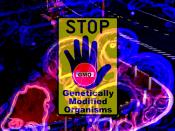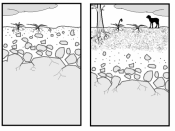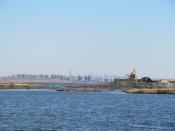How does energy flow through ecosystems?
In order to understand and comprehend how energy flows through ecosystems one must first be familiar with its definition. The term ecosystem is derived from the phrase ecological system, which includes the organisms in a given area. It encompasses the interactions among the organisms, between the organisms, and the nonliving portion of the environment in a specific area under consideration. An ecosystem is an association of animals and plants with their surrounding non-living environment and all the interactions that each organism participates in.
The ecosystem concept is built around the flow of energy and all of its components, which is extremely important to know when dealing with biological community functions. A simple ecosystem works by first receiving energy from the sun that is trapped by the grass during a process known as photosynthesis. The grass is then eaten by a rabbit, which in turn is eaten by a hawk, which eventually dies.
The energy originally contained in the photosynthetic products made by the grass goes through various stages where the body molecules of the original rabbit and the hawk become the heat energy lost from the animals and the decaying dead matter. That's a brief description of how an ecosystem flow of energy is made.
The ecosystemic concept is very helpful as an organizing principle for the geographic study of the biosphere. There are many different scales at which this concept can be applied and there are endless magnitudes of ecosystems that one can study.
How do clouds and precipitation form?
Clouds are the most deceiving visible features of the atmosphere. Even though most people have the misconception that it's pure (because of the way it looks) they are actually a mixture of impurities, mostly water vapor or tiny crystals of ice. Clouds are...


